When speaking of rapid progress and the impact tooling had on jobs and workers, we often talk about the industrial revolution, but what about the current data revolution? In the industrial revolution, we split jobs into smaller jobs and tooled the people to perform those specific jobs better and faster. Let’s talk about the data revolution and how it is retooling and changing the way we work in IT.
The data revolution landscape
In today’s modern networks, the number of network devices and the number of clients has grown exponentially, and with it, the volume and velocity of the data produced by the infrastructure. At the same time, IT and infrastructure have moved out of the “basement” and into the forefront of nearly every business strategy. With the increased criticality and complexity of the IT ecosystem, different roles and personas have risen, such as NetOps, SecOps, DevOps, and AIOps, which lay the path for new specializations, new tooling, and organizational methodologies.
In this article, we will elaborate on the AIOps persona and the capabilities built to address the jobs to be done for this persona. AIOps defines the technologies that implement AI/ML (Artificial Intelligence and Machine Learning) in the infrastructure and management software to harvest, store and analyze the data so that the network operators and application managers can leverage these technologies can deliver capabilities and services at a scale larger than that would be possible at a human scale and do so proactively rather than reactively. As AI/ML capabilities are being implemented in so many of our full-stack networking components that it has become imperative that a specialized team of experts manage and amplify the use of this intelligence.
With the ongoing digital transformations, it is no longer possible to run the infrastructure as was done in the last decade requiring new tools to complete the jobs to be done. IT teams must rely on AI/ML (Artificial intelligence/Machine Learning) tools to keep up and embrace the AIOps persona. Without retooling, It has long been known that the signal-to-noise ratio in many monitoring and management systems is low, specifically, signal-to-noise, with many alerts, quickly becoming redundant and ignored. This created a space for products that took alerts and applied AI/ML to attempt to correlate reported alarms and synthesize and summarize relevant alerts into a smaller actionable subset; however, without the domain expertise, it is often only possible to generalize.
Leading with AI/ML
An advantage of being a solutions company with both hardware and software enables Cisco Systems to apply design thinking methodologies across multiple domains and the full stack of hardware and management software. With design thinking methodologies, Cisco has, over multiple years and product evolutions painstakingly designed the hardware to provide telemetry to the software stack and create the building blocks to provide insights, automation, and security from design and not as an afterthought. The data-rich streaming telemetry gave birth to Cisco’s AI/ML engine, also known as Cisco AI Network Analytics.
Cisco’s industry-leading AI Network Analytics engine is comprised of several technologies, such as:
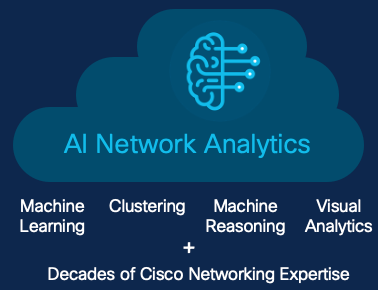
- Machine Learning
- Clustering
- Machine Reasoning
- Visual Analytics
An added unique advantage of Cisco AI/ML is the incorporation of decades of Cisco’s networking expertise and knowledge in running the largest networks across the globe. Cisco’s machine learning is enriched with data from Cisco’s vast customer base and market share, providing a 2nd to none data set for ML training, ensuring Cisco’s model is highly accurate and extremely versatile across different industries and network architectures.
Using AI/ML and methodologies to improve issue and fault detection
A differentiating aspect of Cisco’s technology also comes from Cisco’s unique methodology of health measurement of clients, applications, and infrastructure. As part of reducing the noise and converting alerts to actionable events, Cisco DNA Center AI/ML will only raise issues with high confidence when multiple KPIs are correlated and ensure sufficient contextual data is included to allow for RCA (Root Cause Analysis) of the issue. These actionable alerts, with RCA, allow the IT team to solve the root issue leading to the elimination of repeat issues and a measurable reduction in service tickets.
Yielding tangible business value
As with any technology, the fundamental question we ask ourselves is, “how can It be used to create business outcomes”? Cisco’s AI/ML engine was purpose-built to be easily consumable using Cisco DNA Center and/or its APIs, yielding measurable improvements in MTTR (Mean time to resolution), and MTTK/MTTI; mean time to knowledge or innocence, as some IT leaders called it. Put simply, Cisco DNA Center enriched with AI/ML, significantly reduces the troubleshooting time and time to repair.

With thousands of customers using Cisco DNA Center, our customers have voiced many tangible benefits from using Cisco DNA Center to manage their infrastructure. In focusing on the AI/ML benefits, customers have seen the following:
- High personalized alerts; Cisco’s AI/ML engine creates a custom baseline for each hierarchy location. Alerts are provided based on deviations from the model based on several KPIs, providing a highly accurate issue recognition with measurable user impact.
- See problems sooner; Cisco DNA Center significantly reduces the number of alerts, summarizes them, and contextualizes them, which results in IT teams getting a manageable number of alerts that makes them actionable.
- Solve problems faster; Cisco DNA center will automatically look for root causes and correlate KPIs when presenting an issue, significantly improving the MTTR. Combined with the Machine Reasoning Engine (MRE) providing contextual automated troubleshooting steps, enabling 1st tier support to troubleshoot further and minimize escalations.
Continuous Innovation and Investment with AI/ML
Given the clear impact and benefits of the AI/ML technology, Cisco is continuing to double down and invest in the AI/ML enriched features and functions within Cisco DNA Center and other products. These capabilities are commonly grouped and coined as AIOps with first-in-class innovations such as:
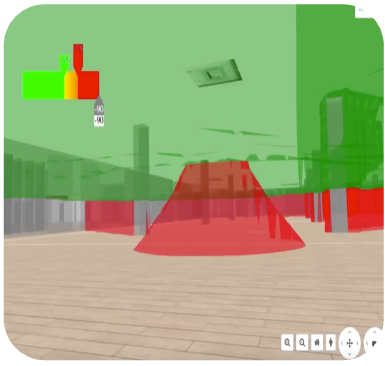
- 3D Maps is a unique feature that utilizes AI/ML visualization techniques to present the RF landscape in a true 3D model. This unique feature takes the guesswork out of troubleshooting, reducing the MTTR and enabling RCA visualization and identification.
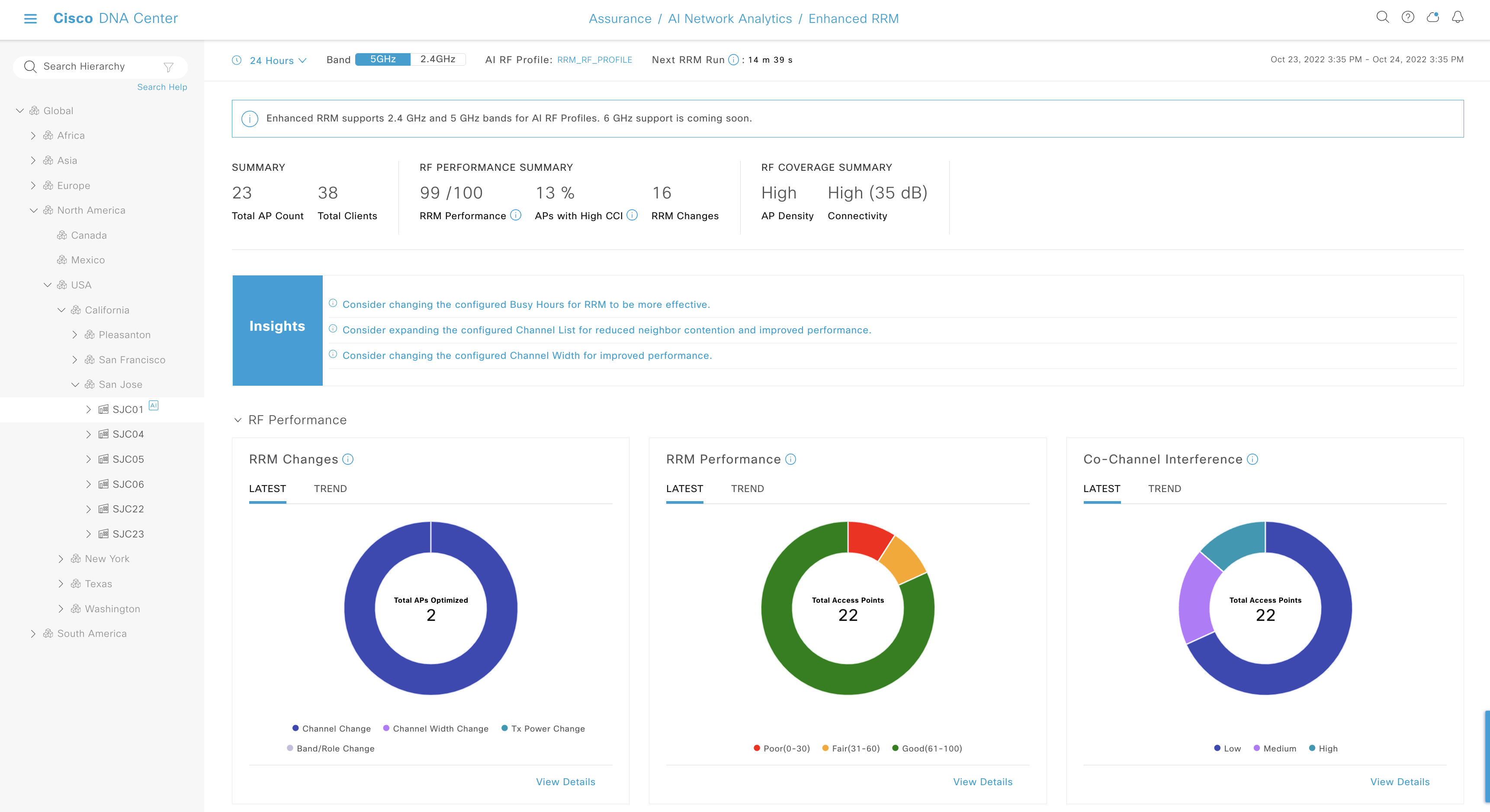
- AI-Enhanced RRM (Radio Resource Manager) is a wireless automation feature that enhances the wireless client experience by utilizing the machine learning model to predict RF changes and tunes the wireless network accordingly based on a predictive engine.
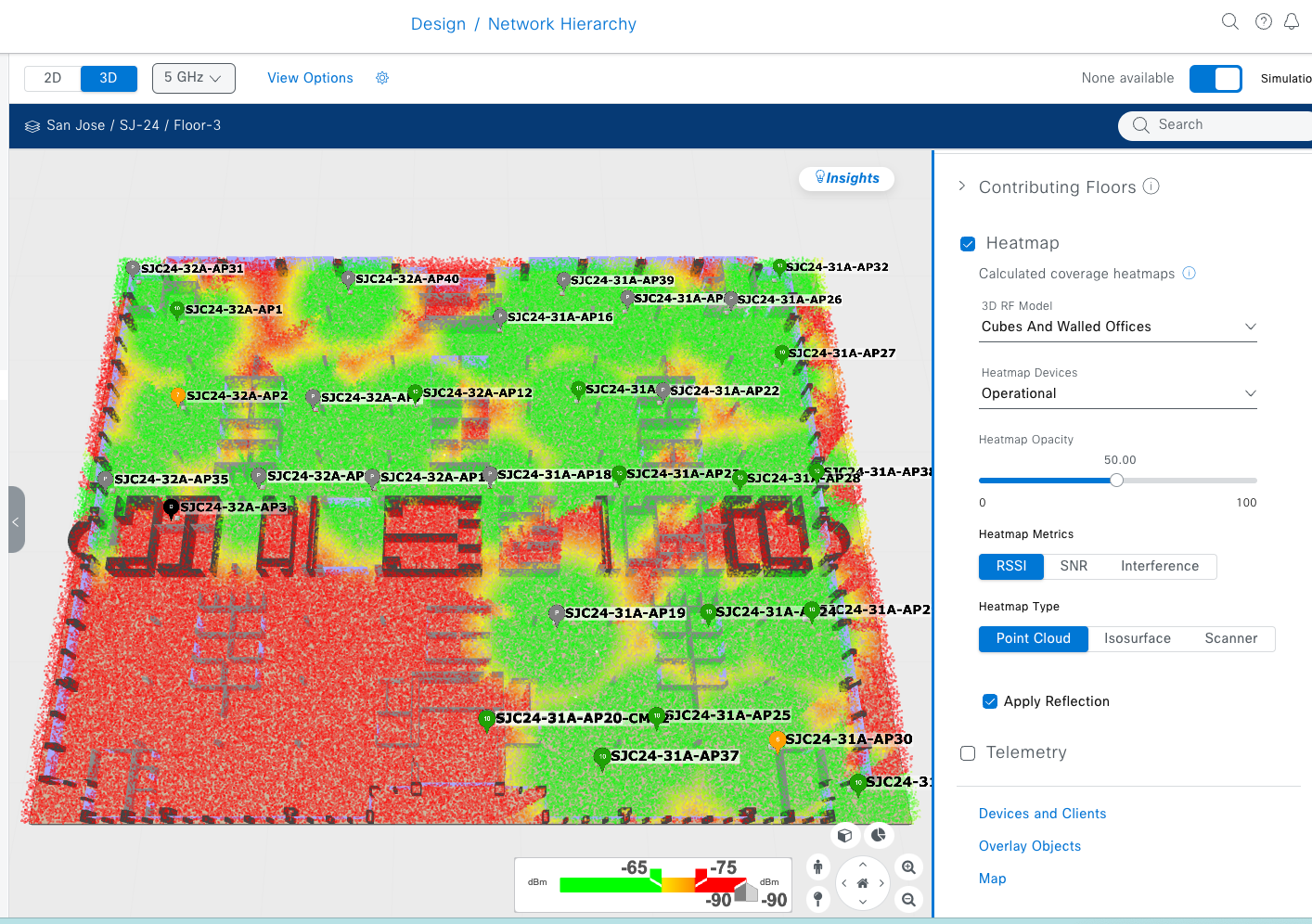
- RF Simulators is a wireless optimization and planning tool combining AI/ML and visualization techniques to aid with wireless planning and troubleshooting. With this feature, Wireless Engineers can plan and model changes and model the impact before performing the change.
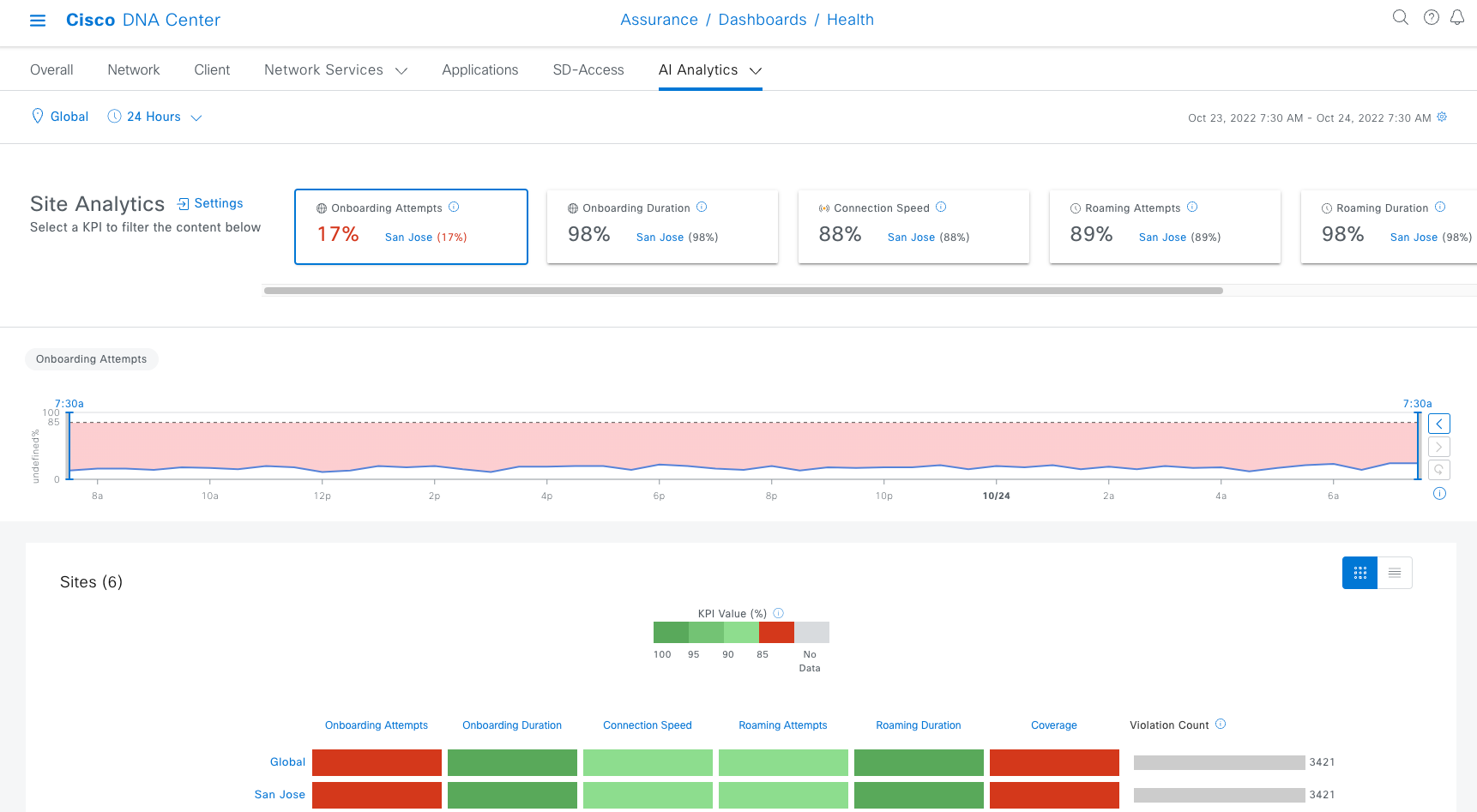
- Site Analytics where AI/ML and baseline are utilized to optimize the network based on declining telemetry values enables proactive remediation of issues before they become user or application-impacting.
For any IT organization committed to providing a best-in-class network experience and seeking how to retool its IT staff and change its operating model from reactive to proactive, Cisco DNA Center is a must.
Learn more about Cisco DNA Center and the AI Network Analytics features
Additional Resources:
Check out our weekly and monthly demo series on Cisco DNA Center


CONNECT WITH US